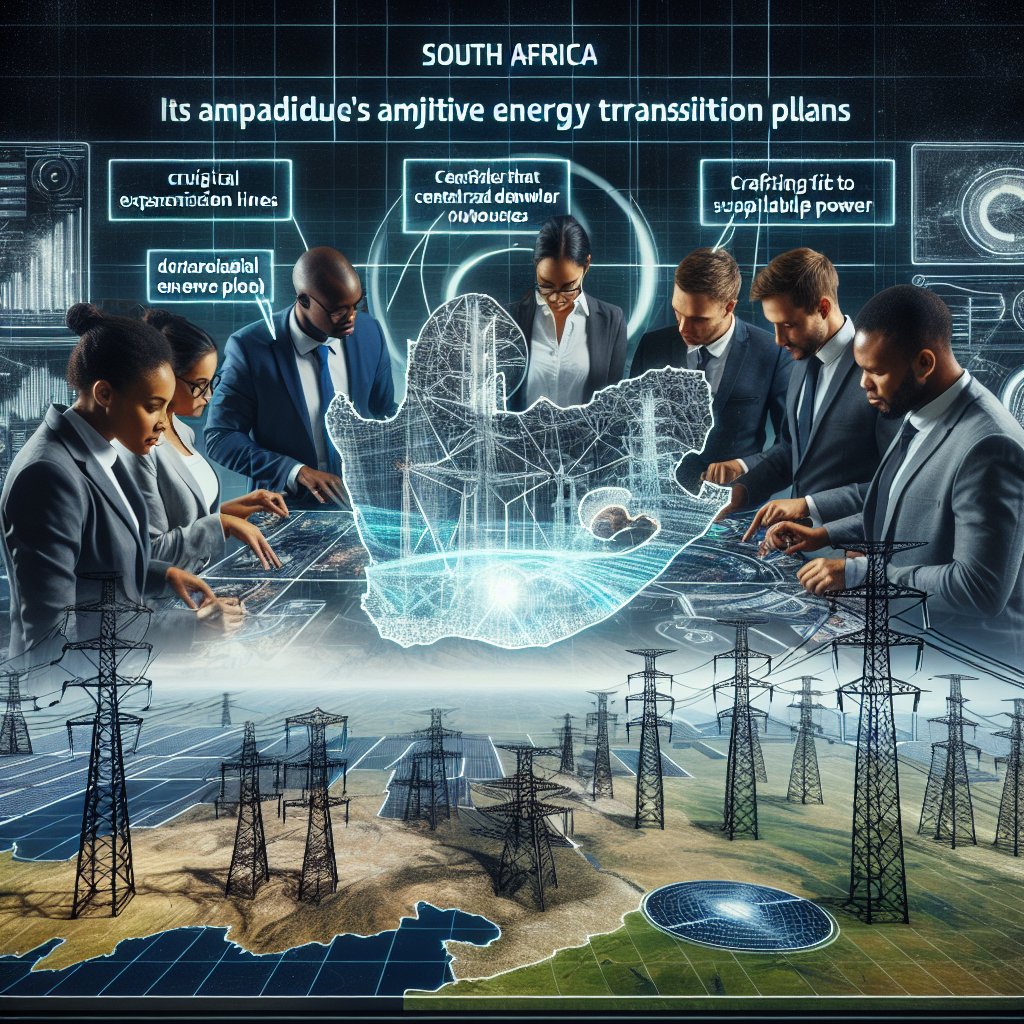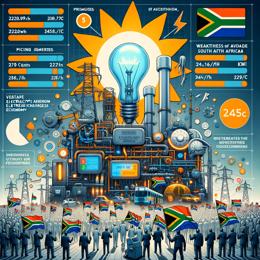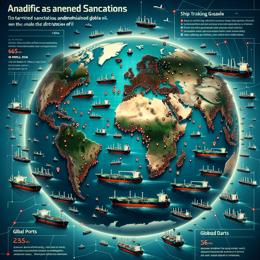Image created by AI
Eskom Seeks R350 Billion Investment for Grid Expansion to Power Renewable Energy Era
South Africa's power utility, Eskom, is aiming for a substantial injection from the private sector, approximating R350 billion, for a decade-long project to expand its grid for the burgeoning renewable energy sector. As chairperson Mteto Nyati recently underscored in an interview, Eskom's coffers alone are insufficient to bankroll the enhancement necessary to accommodate private projects, which offer a beacon of hope to a country plagued by persistent load-shedding.
The investment will address a critical 14,000 km expansion backlog, primarily crucial in the esteemed renewable havens of the Cape provinces. Currently, the existing infrastructure is incapable of handling substantial renewable outputs due to its design favoring traditional centralized power models. In the face of a decentralized renewable energy future, Eskom must reorient its distribution strategy.
South Africa's commitment to an energy transition is clear, although the late realization of the need to upgrade the grid has stunted this progress. The grid, particularly in renewable-rich regions like the Western, Eastern, and Northern Cape, stares at the brink of inadequacy, necessitating gargantuan investment to both enhance and upscale its capacity.
Nyati's stipulation that government will own assets constructed by private contributors aligns with the broader national strategy for grid ownership. Concepts such as the build, operate, and transfer (BOT) model—mirroring approaches for toll road developments—are being considered to facilitate this expansion while retaining state ownership. This demonstrates a partnership pathway where private initiatives can flourish within a public framework.
Electricity Minister Kgosientsho Ramokgopa has corroborated these investment figures, with an even higher estimate for grid modernization needs. This reveals an amenable state stance towards ushering in private investment to realize grid advancements quickly.
By endorsing the strategy that prioritizes state retention of the grid while leveraging private sector liquidity, the Minister has pointed out a pragmatic route. The envisioned fast-tracked infrastructure, including 6,000 km of transmission lines over the next three years, is ambitious compared to the meager 1,400 km forecasted, reflecting a shift to meet the urgency demanded by the energy sector’s evolution.
This grand plan contrasts starkly with historical decisions, particularly the focus on new generation capacities seen in the Medupi and Kusile projects, which faced delays and budget escalations. The diversion to these projects caused a blind spot to the grid expansion necessity, awakening both the government and Eskom to an already strained system and a weakened funding capability. Moving forward, the transmission development plan devised by Eskom offers a roadmap for this infrastructure revolution.
The stakes are high, and the challenge is formidable. While integrating renewable energy into the national grid is a colossal endeavor, it offers a vital solution to South Africa's energy woes. The pursuit of a harmonious blend between public interests and private capital investment positions the nation at the frontier of an energy-independent future. Eskom's call to arms implores the sector to commit to a more resilient and sustainable energy distribution network—a call that could very well define South Africa's energy landscape for generations to come.










